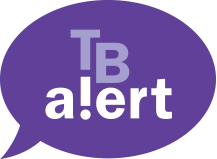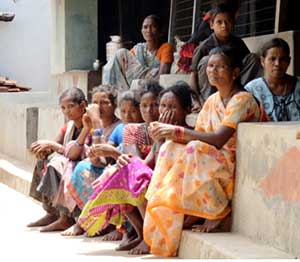TB and HIV are often called a dual epidemic. In 2013, 1.1 million of the 9 million new cases of TB were among people living with HIV (PLHIV), and 78% of these were in Africa. One in four HIV-related deaths is a result of TB.
People living with HIV are around 30 times more likely to develop TB than HIV negative people. HIV weakens people’s immune systems, increasing the risk of opportunistic infections such as TB.
 HIV makes TB more deadly
HIV makes TB more deadly
HIV and TB can be a lethal combination, each speeding the other’s progress, and people with HIV can die from a TB infection within months. TB is able to spread through the body more easily in people living with HIV, which is why TB-HIV is associated with extra-pulmonary TB. Active TB accelerates the progress of AIDS infection in the body.
HIV makes TB more difficult to diagnose and treat
The sputum of an HIV-positive person usually contains a lower concentration of TB bacteria, making it harder to detect in a sputum test. Extra-pulmonary TB, which is more common among HIV-positive people than HIV-negative people, cannot be detected through either sputum smear microscopy or chest x-rays.
TB medication and antiretroviral therapy (ART) need to be carefully monitored to avoid adverse drug interactions and side effects in patients. Treatment may take longer in people living with HIV, due to the likelihood of extra-pulmonary TB. Even after treatment, they are more vulnerable to getting TB again. Those who have been treated for pulmonary TB remain infectious to others for longer after initiating treatment.
But co-infection can be managed
Fortunately, TB is curable and HIV can be treated. Early diagnosis of both is key to reducing deaths from co-infection. There are a number of treatment options for people living with HIV who also have either latent TB infection or TB disease.
In PLHIV, WHO recommends:
- intensified case-finding and treatment for TB
- TB prevention through Isoniazid preventative therapy and early ART
- control of TB infection in healthcare facilities and other settings.
In people diagnosed with or suspected to have a TB infection, WHO recommends:
- HIV testing and counselling to identify people with HIV co-infection
- Cotrimoxazole preventive therapy and ART for people diagnosed with both TB and HIV
- TB treatment and HIV prevention interventions for people diagnosed with TB only.
A coordinated approach
To successfully tackle HIV and TB co-infection, a coordinated approach based on the WHO recommended collaborative TB/HIV activities is crucial.
TB Alert believes everyone living with HIV should be tested for TB and everyone with active TB tested for HIV. Health services for both areas need to be joined up, and ideally based at the same location. By taking these steps, we can work towards the elimination of HIV-associated TB deaths and significant public health gains.

 HIV makes TB more deadly
HIV makes TB more deadly